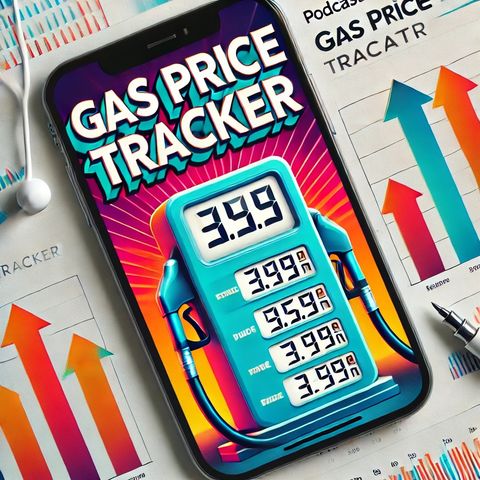US Gas Prices Hover Between 3.50 and 4.00 Dollars Amid Global Economic and Geopolitical Fluctuations

Descarga y escucha en cualquier lugar
Descarga tus episodios favoritos y disfrútalos, ¡dondequiera que estés! Regístrate o inicia sesión ahora para acceder a la escucha sin conexión.
US Gas Prices Hover Between 3.50 and 4.00 Dollars Amid Global Economic and Geopolitical Fluctuations
Esta transcripción es generada automáticamente. Ten en cuenta que no se garantiza una precisión absoluta.
Descripción
As of today, November 22, 2024, gas prices in the United States are experiencing fluctuations influenced by various economic and geopolitical factors. The average price for a gallon of regular...
mostra másSeveral factors contribute to the current pricing trends. Seasonal demand changes, especially with the onset of colder weather, typically reduce driving frequency, leading to a potential decrease in demand and slight price moderation. However, the global oil supply remains a crucial factor influencing domestic gas prices. Key oil-producing countries are adjusting their production rates, impacting crude oil availability and consequently the cost at the pump.
Geopolitical tensions, particularly in oil-rich regions, have also played a role in fluctuating oil prices, affecting gas prices in the U.S. Any disruptions in major supply lines or political instability in these regions can lead to a rise in oil prices, which translates to higher gas prices domestically. Additionally, ongoing production decisions by OPEC (Organization of the Petroleum Exporting Countries) heavily influence global oil supply levels. Recent meetings and agreements within OPEC could either stabilize or disrupt current pricing trends based on whether they decide to cut production or increase it.
Another factor influencing gas prices is the strength of the U.S. dollar. A stronger dollar makes oil cheaper in international markets, often leading to lower gas prices domestically. Conversely, if the dollar weakens, imported oil becomes more expensive, potentially increasing gas prices. The dollar’s value is currently in a moderate range, which is exerting a mixed influence on fuel prices.
Environmental policies and initiatives continue to shape the longer-term landscape of gas prices. The United States government is advancing regulations aimed at reducing greenhouse gas emissions, which may impact oil production and refinery processes, thereby affecting prices. Investments in renewable energy and electric vehicles are gradually altering the traditional energy consumption patterns, which, over time, can shift demand away from gasoline, potentially stabilizing or reducing prices.
Regional discrepancies in gas prices are evident, with coastal states like California experiencing higher prices compared to states in the Gulf region or the Midwest. This is often due to different state taxes, delivery costs, and regional environmental regulations. California, for instance, imposes higher environmental standards and taxes, contributing to its consistently higher gas prices.
Furthermore, recent events such as natural disasters or unexpected refinery outages can lead to temporary spikes in local gas prices. These disruptions impact supply lines and refinery production, causing localized supply shortages and price increases.
Listeners should also be aware of international trade developments, such as tariffs or trade agreements, which can influence domestic gas prices by affecting supply chain logistics and costs. Any changes in these areas could impact prices at both regional and national levels.
Technological advancements in fuel efficiency and alternative energy sources are gradually reshaping the energy consumption landscape. While these changes have not yet drastically altered gas prices, their influence is expected to grow over the coming years.
Overall, while gas prices today reflect a complex interplay of global and domestic factors, ongoing monitoring of these influencing elements is crucial for anticipating future trends.
Información
| Autor | QP-5 |
| Organización | William Corbin |
| Página web | - |
| Etiquetas |
Copyright 2024 - Spreaker Inc. an iHeartMedia Company

Comentarios